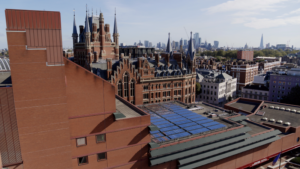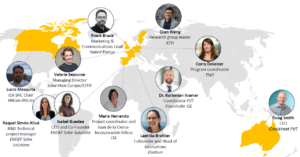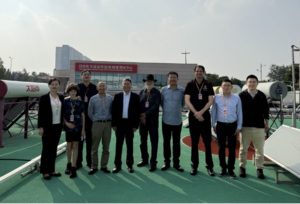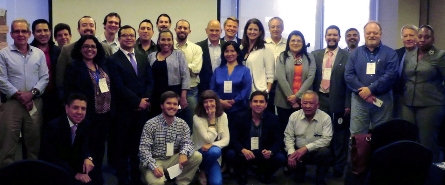
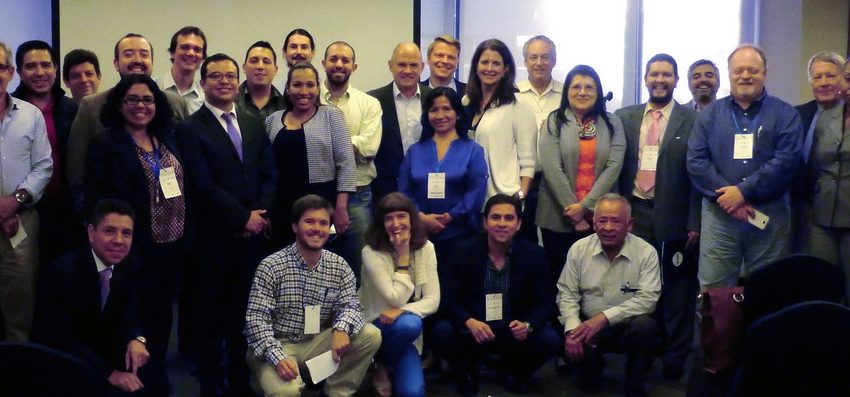
Latin America on Its Way to Solar Thermal Quality Standards
Brazil is going to implement compulsory certification of solar water heating (SWH) equipment in 2015. Uruguay, Argentina, Chile and Mexico already have laboratories for testing, and Costa Rica has recently set up one. Latin America is working through the regional Pan American Standards Commission, COPANT, on regional standards for SWHs, with the aim of harmonising them with ISO standards. The region is not yet considering a common regional testing and certification scheme, but there is a growing consciousness of the fact that testing and certification performance, as well as quality is very important to developing the SWH markets of the region. It is the reason why 50 experts from 14 countries have recently discussed how to accelerate the process: The Regional Forum (from 29 to 30 June 2015) was jointly organised by the International Renewable Energy Agency (IRENA), the project “Quality Infrastructure for Renewable Energy and Energy Efficiency in Latin America and the Caribbean (LAC)” coordinated by the National Metrology Institute of Germany, PTB, the Latin American Energy Organization, OLADE, the Electricity Institute of Costa Rica, ICE, and the National Standards Body of Costa Rica, INTECO. All presentations are available for download on the IRENA website.
Photo: IRENA

Several international and regional experts presented the latest developments on the different components of the quality infrastructure for solar water heating systems, including international ISO standards for solar thermal in residential applications, testing methods for solar collectors, SWH certification systems implemented in the USA and Europe and the use of quality infrastructure in national incentive policies for SWH markets. With the exception of Brazil, Latin American SWH markets were still small, meaning huge and expensive laboratories created solely for testing solar heating equipment might not be a realistic goal, some participants assumed. “Actually I think that the process of quality assurance in Latin America is quite advanced,” said Stephan Fischer after the meeting. The expert from the Institute for Thermodynamics and Thermal Engineering ITW/TZS of the University of Stuttgart, Germany, added that “the next steps must be a more frequent experience exchange between the test labs and certifiers and the establishment of Round Robin tests.” This means that selected collector or tank units are sent from laboratory to laboratory to compare the test results in each lab. More and more countries in the region are developing testing facilities for SWHs, providing a vision of the market potential for this technology. Hence, experts are looking for standards and testing solutions which are less cost-intensive and well adapted to each country’s climatic conditions.
New test labs: Do-it-yourself versus turnkey solutions
Stephan Fischer also emphasised the importance of running cost-efficient testing laboratories (see the attached presentation). He presented both options, outdoor and indoor facilities for performance testing. During his presentation, he explained the pros and cons of each approach and how to build a do-it-yourself solution based on five components: a data acquisition unit (i.e., computer plus multi-meter unit), a cooling machine, a temperature unit and a solar collector mounting system. Although do-it-yourself might be cheaper, Fischer said, decision makers should consider possible problems resulting from inexperience, which may result in higher costs at the end of the day than if one had opted for a turnkey solution from the beginning. Of course, you might say, that was what you would expect a representative of a turnkey provider to tell you. But he also said that there were advantages to both solutions.
Uruguay: Building a test lab according to existing construction plan
Uruguay might serve as an example here: Rodrigo Alonso of the public university Universidad de la República explained how one of the smallest countries of the region has been able to set up a testing infrastructure. Uruguay has decided to build the quality infrastructure based on two public laboratories to perform quality testing (LATU) and efficiency tests (LES at the Universidad de la República). The performance laboratory that is still under construction is designed to utilise the best of both worlds. “We decided to buy an existing design and construction plan for a test lab, but to build the laboratory ourselves,” Alonso explained to solarthermalworld.org. This way, he argues, they do not need to reinvent the wheel. “We can use existing experience and at the same time, we have the opportunity to establish our own specialists.” As the performance laboratory is situated at the national public university, a turnkey solution had not even been under discussion. “We really wanted to learn from the experience of building, programming and configuring such a laboratory.” The testing facility for energy efficiency located at the Universidad de la República shares resources with other research projects, while the laboratory which tests the quality and security of solar collectors and tanks offers similar test for other products. Therefore, the same equipment used to test under- and overpressure on collectors measures the impact of wind on window panes. Still, the Uruguayan experts assumed in their presentation that small markets would need strong political support if they intend to build a testing infrastructure, as laboratories would not generate profits.
The participants of the forum held in June 2015 also emphasised the importance of continuing to work on other aspects related to quality infrastructure, particularly regarding quality assurance for installations or certifying installers, and integrating quality assurance requirements into incentive policies for SWHs. Participants also agreed on creating a technical committee to run an inter-laboratory Round Robin test for solar water heaters. “The forum has proved the increasing interest and awareness from more and more countries in the region in the relevance of quality assurance as a pillar for robust SWH market, with interest coming not only from technical institutes but from policy and regulatory bodies as well,” IRENA representative Francisco Boshell concluded and added that “this is paving the way for solar thermal technologies to be an attractive, competitive and reliable alternative to conventional technologies for consumers.”
More information:
This news was written by Vanessa Kriele, a German freelance journalist specialised in renewable energies and world economics.
